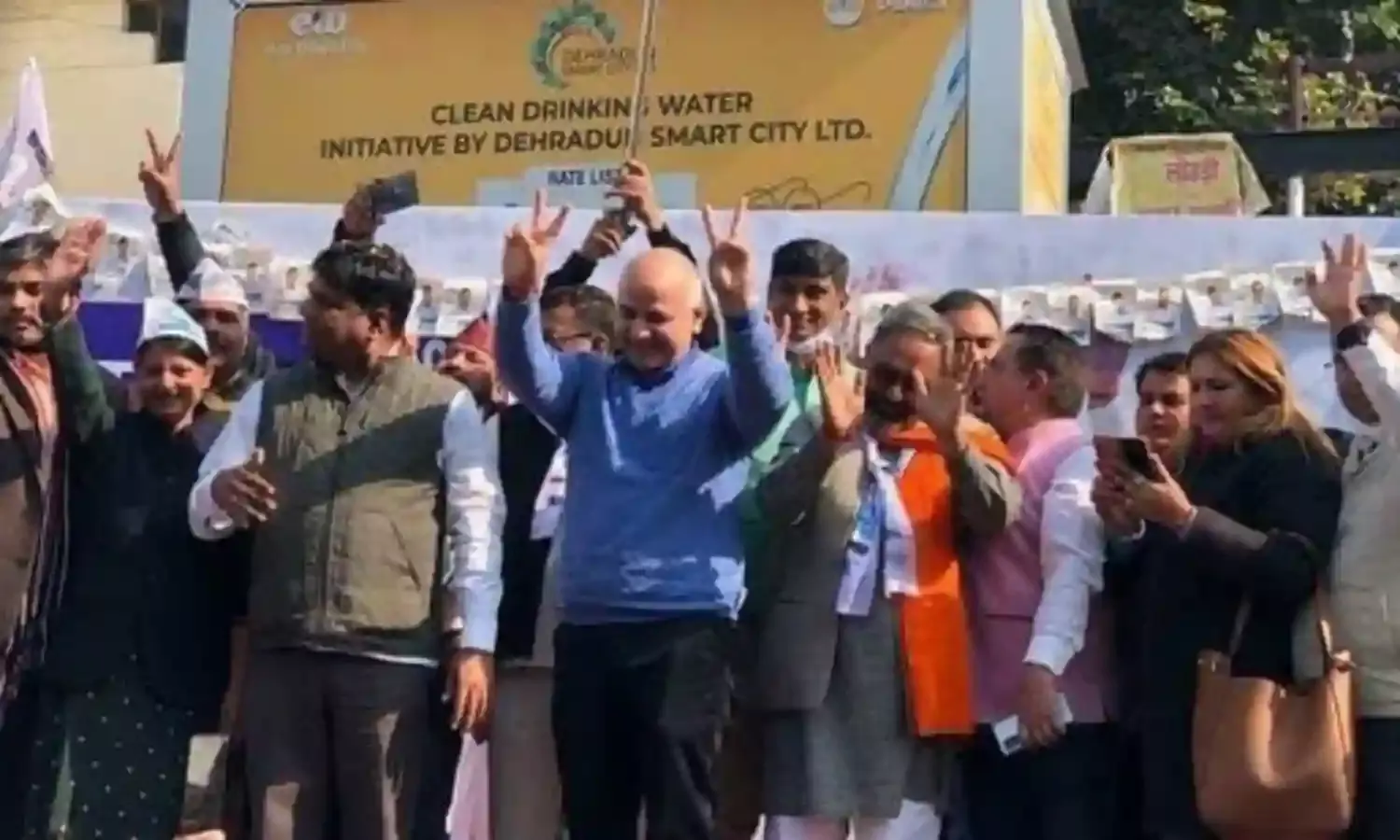For Now, BJP on the Defensive in Uttarakhand
Observers expect attempts at communalisation;

The small hill state of Uttarakhand goes to polls along with Punjab and Uttar Pradesh, Manipur and Goa in a few months. Two factors expected to bear on the election results here are the ongoing farmers’ agitation and the political turmoil in Punjab.
The fight in Uttarakhand is shared mainly between the governing Bharatiya Janata Party and the Congress, with a rookie Aam Aadmi Party threatening to play spoilsport in some of the seats. In the last elections a BJP riding on Prime Minister Narendra Modi’s popularity trounced the Congress winning 57 of 70 seats. But this time round it’s the BJP on the defensive, for now.
Three changes to the chief minister’s post will put a big question mark on any claims of good government. Trivendra Singh Rawat was replaced with Tirath Singh Rawat, and the party’s central leadership replaced him with Pushkar Singh Dhami in a few months.
The state government’s poor management of the Covid second wave and the cascading economic impact may also dent the BJP’s prospects.
Uttarakhand was the cradle of the fake Covid test scam during the Kumbh, and observers say that nothing concrete has yet emerged from the ongoing investigations.
“But it is the farmers agitation that is threatening to have a major impact on the results,” said political analyst SMA Kazmi, who lives in Dehradun, “in the districts in the plains and the Terai that include Udham Singh Nagar, Hardwar and parts of Dehradun, and constitute majority of the seats.”
“And the impact is expected obviously in the Terai belt of Udham Singh Nagar that is described as mini Punjab, with a large Punjabi population having deep relations with their brethren in Punjab that has been the cradle of farmers’ movement since the day the anti people farm laws were brought about.”
According to another veteran political commentator, Jay Singh Rawat, “The impact of the farm laws is such that even Dhami’s seat in Khatima cannot be considered a safe bet by the BJP,” referring to the chief minister.
“The surveys being circulated at present by various media outlets and others are not reliable as no one has been able to reach the remote hill districts till now because of inclement weather conditions. At present the BJP’s only saving grace is Modi’s popularity that is still visible.”
None of this means that things are rosy for the Congress. Despite its leader Harish Rawat emerging as the most popular choice, the party remains faction ridden as usual. Rawat also played an important role in the party’s turmoil in Punjab, which observers say will have an impact in the Terai.
“The message that has gone out for now – that the Congress is sliding downwards at the national level,” said Kazmi.
It is the rookie AAP that has thrown a spanner in Uttarakhand’s political wheel. By declaring retired colonel Ajay Kothiyal its candidate chief minister, it is obviously trying to lure the large number of ex-servicemen and their families in the state.
Kothiyal is also a reputed mountaineer and was very active in the Kedarnath relief efforts in 2013, and is an icon among youth in the hill districts whom he trains free of cost for enrolment in the services.
AAP’s shortcoming is in the organizational network required across the state, but it could play spoilsport in some seats where it can garner a substantial vote share.
All the parties remain oblivious to the real issues.
“The people are being fed a communal potion and being kept intoxicated. No one is talking about important issues like the menace of wild boar, monkeys and neelgai that have been causing immense damage to the agricultural crops.
“The issues of poor education, health care and roads in the hills remain as they have always been. Similarly, the hill-plain divide continues. The much hyped tourism also remains confined and concentrated to a few destinations that are easily approachable for the people of the plains,” said political observer Vinod Pande from Nainital.
One of the issues echoing across the hill districts is the “relaxation” of land laws for industrialists and investors by the Trivendra Rawat cabinet in 2018.
“Since this has angered many people in the hills, the right wing organizations have been trying to give a communal twist to the issue,” said Jay Singh Rawat.
“Just to divert the attention from the main issue they have been accusing the minority Muslims of indulging in ‘Land Jehad’ by purchasing land and settling in the hills. There have been many instances of Muslims being targeted.”
Everyone knows who benefits from communal polarization, said many from the state, and for whom it is the first and last resort.
They said the Muslim population in the hills is negligible, and the families belonging to these districts can be counted on the tips. Often migrant Muslim labourers come to these districts to temporarily work on projects and then return.
Many expected further attempts at religious polarization, and a communal spillover from neighbouring Uttar Pradesh.

